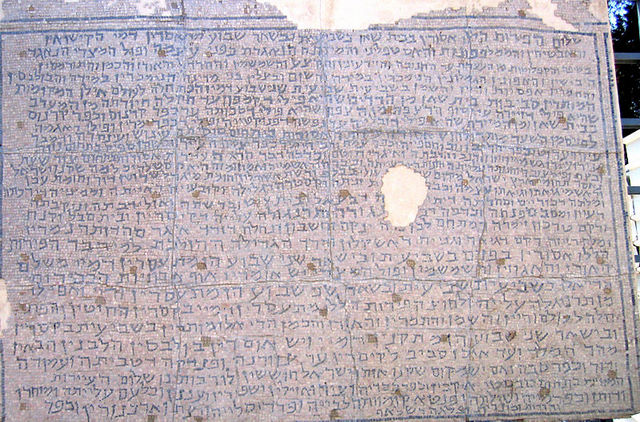Rehov Synagogue Mosaic Floor, 6th-7th century CE
The oldest known Talmudic inscription
The synagogue of Rehov was excavated by Fanny Vitto of the then-Israel Department of Antiquities and Museums between 1974-80. The synagogue of Rehov was built in three phases, consisting of a 4th century basilica, enlarged in the 5th-6th centuries, and destroyed as it was being enlarged and renovated during the 6 th -7th century– apparently by an earthquake. The 5 th – 6 th century synagogue contained a variety of unpublished inscriptions. The excavator notes that “the columns bore large inscriptions in red paint, some of them in a tabula ansata and a wreath. The inscriptions, in Hebrew and Aramaic on white plaster, included a variety of texts- benedictions, dedications, a list of the priestly courses and a copy of a letter dealing with the laws of tithes in the Sabbatical year” (1993- 1272-3). The so-called “letter” is of particular interest, as it is the earliest preserved halakhic text yet discovered. According to the excavator, this inscription begins with the word “Shalom” and contains texts that directly parallel classical Rabbinic traditions in Tosefta Shevi’it 4-8-11, Sifre Deuteronomy 51 and Jerusalem Talmud Demai 2-1, 22c-d and Shevi’it 6-1, 36c. The inscription concludes with the phrase- tyrf hbc kf kg ouka, “peace upon all the people of the town…” (Vitto, 1992- 1459). S. Lieberman suggests that this text may be a transcription of a letter sent by a rabbinical court (beit din) to Rehov adjudicating practical matters of Biblical agricultural law (1976- 74).




